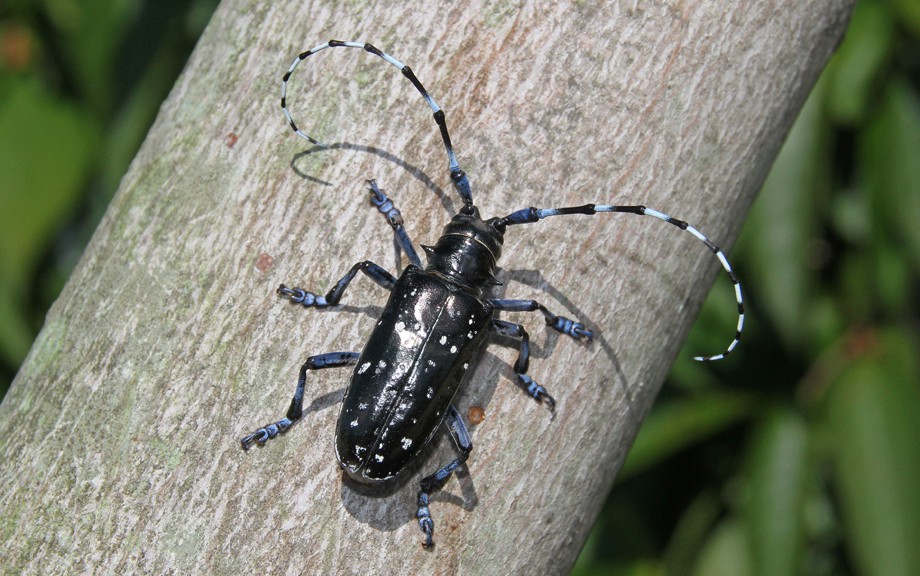The Asian longhorned beetle is an invasive species that was introduced to North America in the 1990s and made its way to Ontario by 2002. It is originally from China and Korea where it is also considered a pest which kills a variety of native trees.
The Asian longhorned beetle typically targets broadleaf hardwood trees, including Birch, Maple, Elm, Hackberry, Horse Chestnut, Mountain Ash, Poplar, Sycamore and Willow. There is currently no treatment or insecticide prevention for the beetle, and a widespread infestation could lead to a problematic decline in our native hardwood trees and biodiversity. If a tree becomes infested, it will die.
The last sighting of the Asian longhorned beetle in Ontario was in Mississauga, near Pearson Airport in 2013. Asian longhorned beetle control has been strictly regulated, and with the proper guidelines and rules in place, this invasive species will hopefully be contained and not cause irreparable damage to our trees.
Asian Longhorned Beetle Identification
The Asian longhorned beetle is can be easy to identify because of its unique appearance. Adults are 2-4 centimetres in length and can be identified by their shiny body with white, irregular spots and bluish-white legs. It has long antennae, typically twice its body length.
These characteristics make it a very noticeable insect when it is visible.
Damaged Caused
Asian longhorned beetle damage is easy to spot. Eggs will hatch in the summer and fall, allowing the larvae to tunnel into the tree trunk and limbs. The small tunnels made by the larvae weaken the tree and are what cause the damage that ultimately leads to the tree’s death.
Asian longhorned beetle identification can also be done by looking at the damage on the tree. In mid-summer and early fall, you will see weeping sap on the trunk of the tree and holes all around the bark of the tree. These holes will be about the size of a dime – typically, very noticeable.
Asian Longhorned Beetle Control
Currently, there are no treatments or insecticide prevention methods for this invasive species. Asian longhorned beetle control relies completely on identifying infested trees and preventing the spread of the infestation.
As the Asian longhorned beetle in Ontario was most recently found in the Mississauga area, there is a regulatory area of approximately 20 square kilometres (Finch, Martin Grove, Highway 401, and Dixie) where the movement of wood chips, bark chips, lumber, wood, trees, nursery stock, logs, and any other raw wood products is restricted. This regulation is necessary to prevent any potentially infested wood from spreading outside this area.
Because there are no treatments for an infestation, the tree will die if infested. It must be cut down and burned to prevent the spread of the insect further.
If you believe you see the insect or that your tree could be infested, call the Ontario Ministry of Natural Resources at 1-800-667-1940 or the Canadian Food Inspection Agency at 1-800-442-2342 to report it.
If you suspect your trees could be infested by the Asian Longhorned Beetle, contact P & A. We can help diagnose the infestation and inform you of the proper reporting methods to prevent the spread of the Asian longhorned beetle in Ontario.